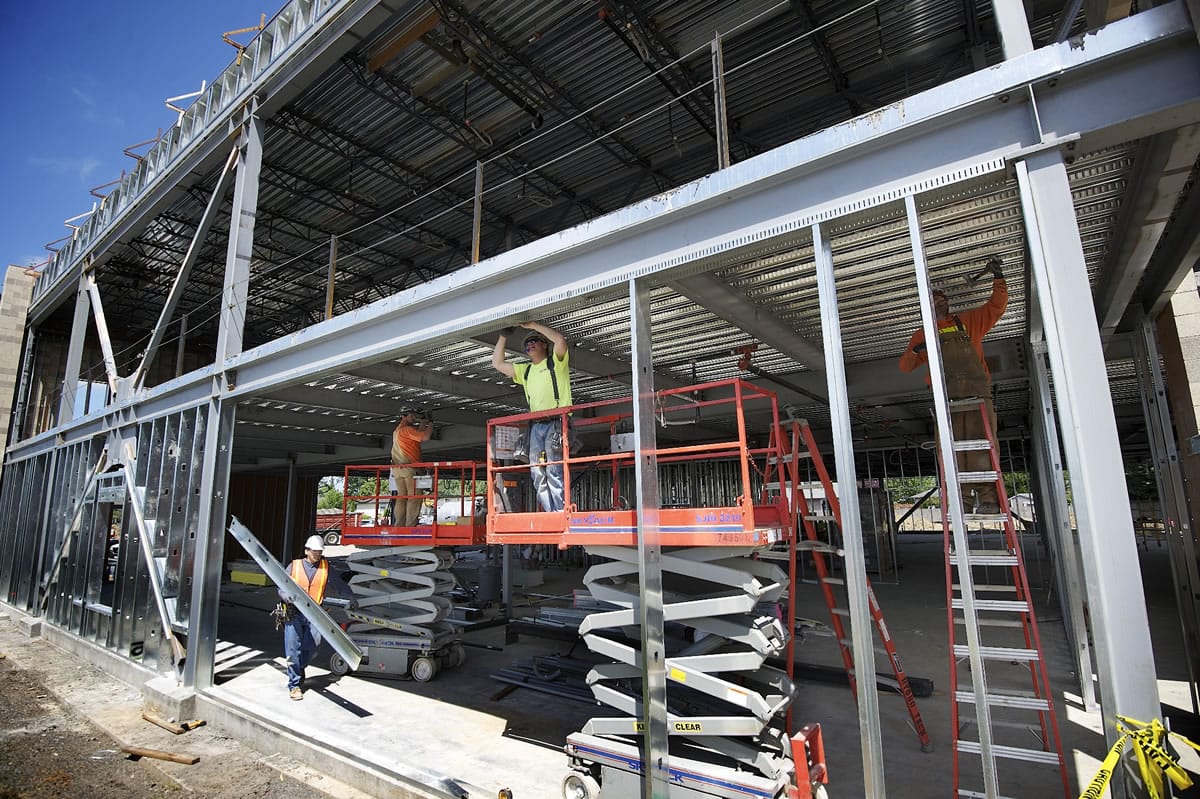More often than not, there’s been little to cheer about Clark County’s recovery since the economic crash ended more than three years ago. But even a hard-core pessimist would be hard-pressed to avoid cracking a smile at the numbers the region put up last month.
In the 12 months ending in October, Clark County added 4,100 jobs across its private and public sectors, according to a report released Tuesday. That robust hiring by employers translated to an annualized growth rate of 3.1 percent. That’s nearly double the annual pace at which both Washington state and the nation are growing: 1.7 percent. Usually, when the county’s economy is healthy, its annual growth rate clocks in at roughly 2.5 percent to 3 percent.
To be sure, the county continues to dig its way out of a deep hole gouged by the 5-year-old financial crash. And doubts linger over whether the wages attached to the jobs being created are up to snuff. Still, the county’s economy no longer limps along, trying to find an engine to propel it forward. In October, employment growth fully entered acceleration mode.
“There’s really pretty broad-based hiring right now,” said Scott Bailey, regional labor economist for the state Employment Security Department, who’s tracked Clark County’s economy since 1989. The region “has accelerated over the last year or two in terms of job growth.”
He added, “We’re doing better than just about anybody, actually.”
Hot, warm, warming
In his latest “Southwest Washington Labor Market News” report, Bailey described most job sectors as “hot,” “warm” or “warming.” With a sizable bounce from the building of apartments, construction (“hot”), was up 800 jobs over the year. Trade, transportation and utilities (“warm”) and manufacturing (“warm”) chipped in 1,100 jobs and 400 jobs, respectively. And the public sector (“warming”) — which lists seven governments and school districts in the county’s top 10 largest employers — “was up 400 jobs over the year, despite a loss of 200 state jobs,” according to Bailey. “Most of the gain was in K-12 education.”
Meanwhile, the county posted a preliminary unemployment rate of 7.1 percent in October. That’s down from 9.7 percent unemployment in October 2012. A caveat: October’s initial jobless rate of 7.1 percent is likely to be revised upward to just above 8 percent. The revision will take into account those unemployed county residents who previously worked in Oregon.
Another caveat: Although Clark County’s economy continues to improve, not everyone who wants full-time work is securing it. The underemployment rate is a broader measure of labor market inertia that includes involuntary part-time workers (those who want full-time work but can’t find it) and those who’ve given up looking for work but who still want a job.
The U.S. underemployment rate was 13.8 percent in October, according to Bailey’s report. In October 2012, it was 14.5 percent. Bailey said Clark County’s underemployment rate is likely as high or higher than the nation’s.
Nevertheless, it appears the county’s unemployment rate is going down mostly because people are getting jobs, not because they’re dropping out of the labor market. As Bailey put it: For now, the decrease in the county’s jobless rate “seems to be mostly for the right reasons.”
Recovery concerns
What’s more, the sectors that saw payrolls fatten in October, such as construction and manufacturing, generally pay well. The construction sector pays an annual average wage of $47,997. Manufacturing: $53,857. Government: $47,448.
But there were troubling signs last year as far as wages go. About 26 percent of the new jobs created in 2012 paid below $12 per hour, Bailey said. However, those jobs accounted for “only about 20 percent of the employment base,” he said.
Still, “we all want to see higher-wage jobs,” Bailey said, “and that wasn’t happening in 2012, and we’ll have to keep monitoring that.”
Also concerning: Clark County is picking up the pace of job growth only after taking huge losses.
During the Great Recession years — from February 2008 to February 2010 — the county hemorrhaged 9,955 jobs. Since then, it has recovered 8,553 jobs, or about 86 percent of what was lost.
It’s a reminder that while October’s labor market results showed the county finally pressing hard on the gas pedal, there’s still blacktop left to regain. Plus, Clark County is no island. It’s subject to national and global market gyrations.
And nationally, the economy is offering “the same warmed-over gruel,” Bailey wrote in his report.
Growth in manufacturing, wholesale and retail sales remains “0.8 percent below its pre-recession peak” (minus 5 percent when adjusted for population growth), according to Bailey. And while personal income — excluding transfer payments such as Social Security — is 3 percent above its pre-recession peak (minus 1 percent when adjusted for population growth), Bailey wrote, “the gain has gone entirely to the top 1 percent of households.”




